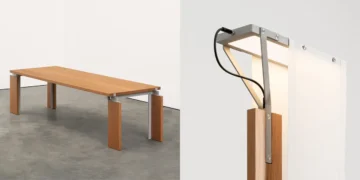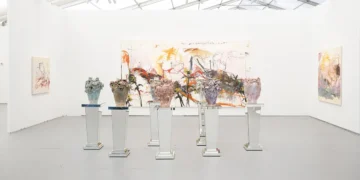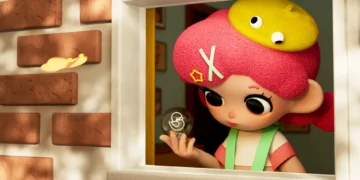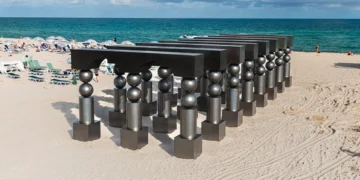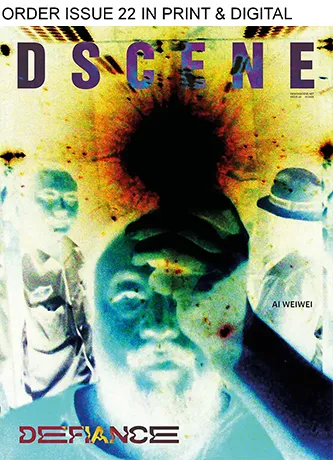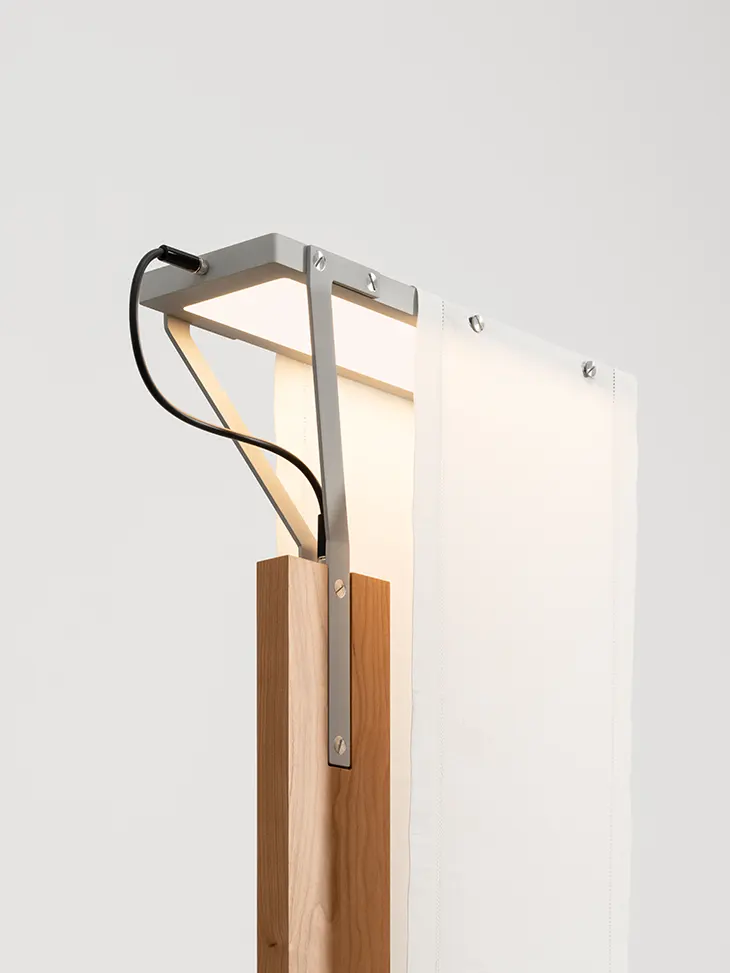
Friedman Benda presents Formation, the first U.S. gallery exhibition by Italian design duo Formafantasma. Open from June 6 to August 1, 2025, the exhibition introduces a series of works that explore how furniture shapes the domestic environment. Formafantasma draws attention to the structure of furniture by beginning each piece with a single plank of cherry wood, often used in American cabinetmaking. Through that starting point, the studio explores the transformation of simple material into functionally precise and visually considered pieces.
DESIGN
The collection uses cherry wood as its primary material, paired with brushed aluminum elements. This contrast pushes against expected associations, wood suggesting warmth and longevity, aluminum evoking modern tools and electronics. Rather than mix the two, the designers place them side by side, allowing each to stand on its own.
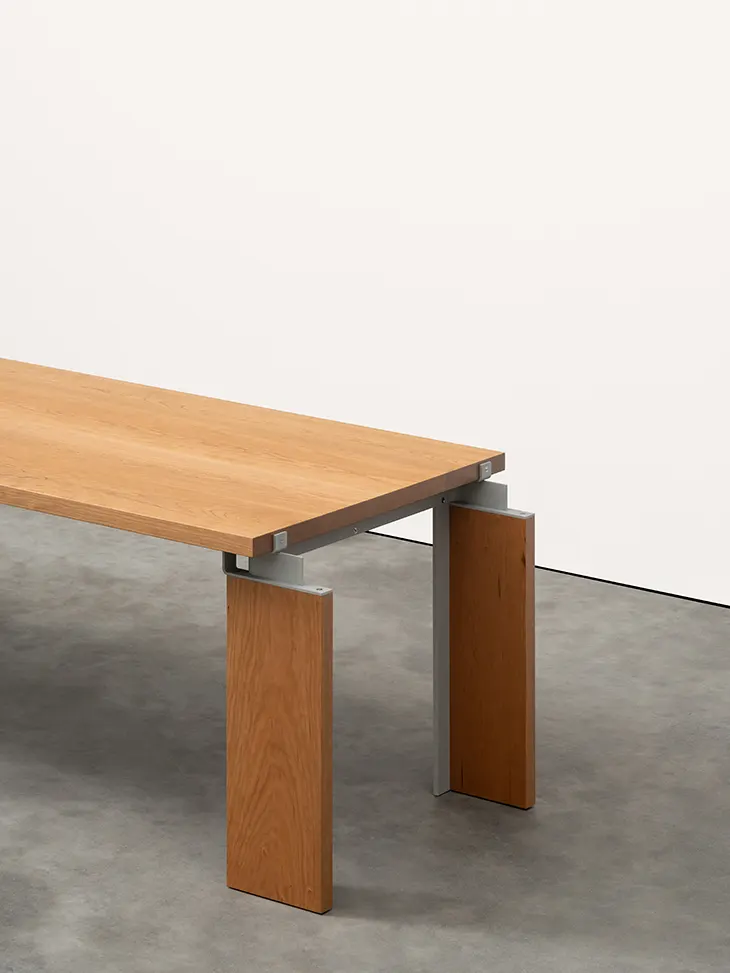
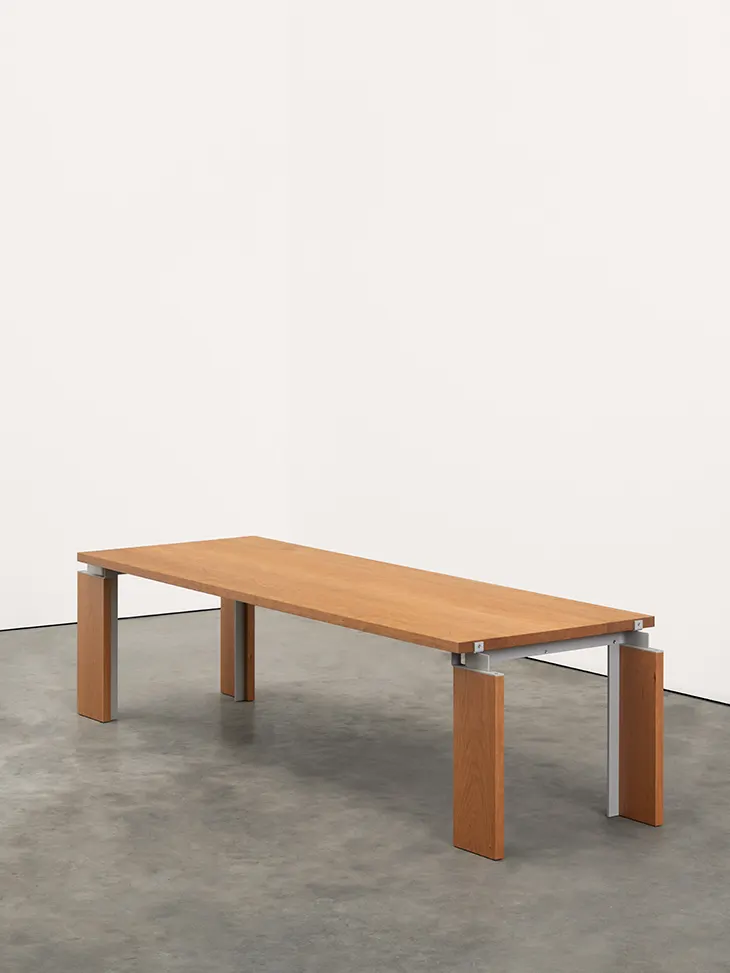
The lighting elements emphasize this pairing. LED panels shaped like everyday screens borrow the proportions of mobile devices and laptops, placing a digital reference into a domestic setting. These familiar forms change their role within the home, shifting from tool to object.
Formafantasma draws influence from a range of figures who emphasized precision and intent in their work. They reference Shaker builders, Frank Lloyd Wright, and George Nakashima as a way to build from a lineage grounded in structure and purpose. The Shakers prioritized utility, Wright brought together craft and technical thinking, and Nakashima treated wood with a level of respect rarely seen in contemporary production.
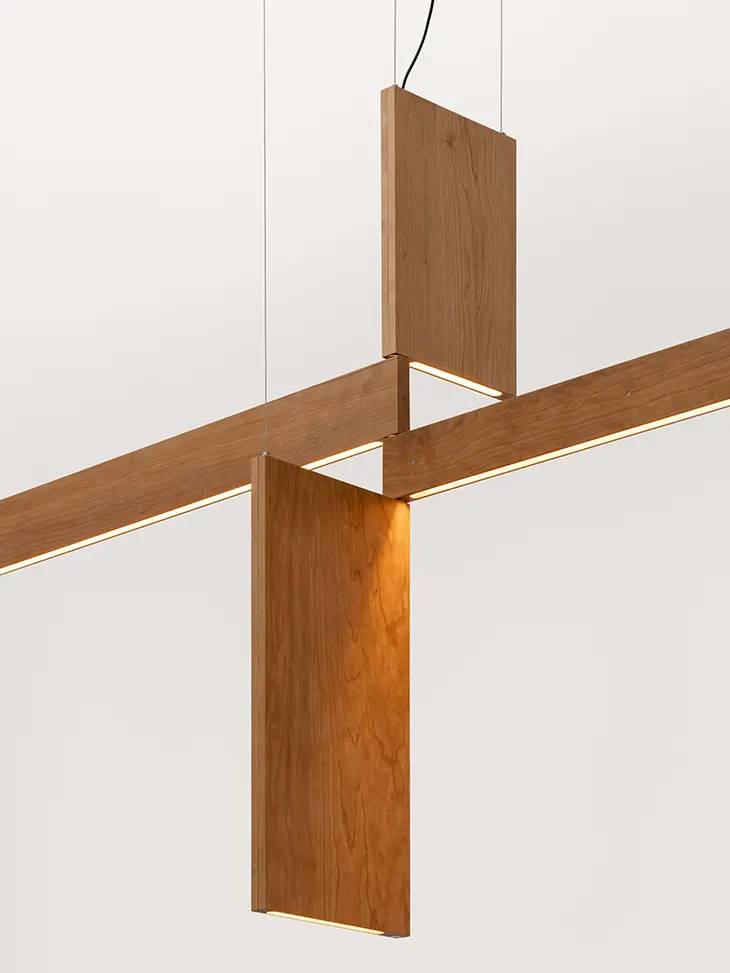
In addition to wood and aluminum, textiles appear throughout the collection in subtle, meaningful ways. A table may carry a cloth, a lamp may use a linen shade, and a chandelier might incorporate fabric elements. These choices refer to domestic activities historically linked to women’s labor, handmade linens, draped coverings, and textile-based decor.

Formation creates an environment where nothing tries to stand above the rest. The collection avoids theatrics and invites viewers to slow down. This approach does not seek to surprise or overwhelm. Instead, Formafantasma presents furniture as something that participates in daily life without requiring explanation. The materials speak clearly, the forms reference both past and present, and the result encourages a different kind of observation.

